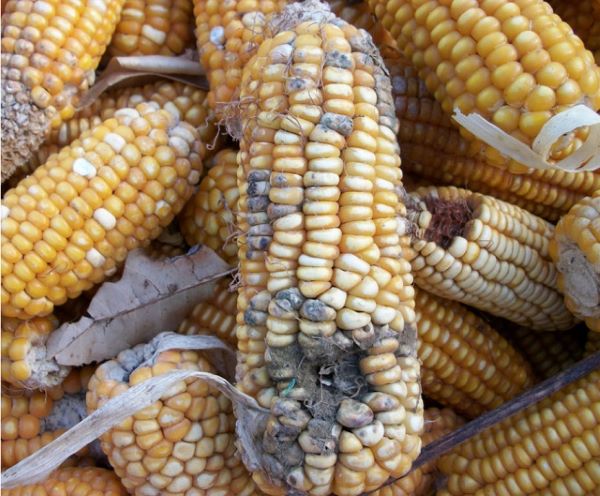Scientists from Uganda’s National Agricultural Advisory Research Organization (NARO) have developed products that can consistently reduce aflatoxin contamination in grains by over 80%.
According to the research organization’s director general, Dr. Ambrose Agona, the products, NARO Aflatoxin Binder and Aflasafe have been proven to render Uganda grains safe for consumption.
Aflasafe
“Our Aflasafe product, for instance, can consistently reduce aflatoxin contamination by over 80 per cent mostly in pre—harvest and it is cost-effective and easy to use by farmers,” said Agona.
The Aflasafe technology which is also existent in the neighbouring countries such as Kenya and Tanzania is currently being validated in farmers’ fields to produce data for its official registration before commercialization.
The exercise which is conducted by NARO and IITA started in 2020 and has given some positive outcome with ability to reduce aflatoxin levels in maize, groundnuts, and sorghum by over 85%.
“I believe that the success of the technology enhancing awareness about aflatoxin and its management, increased capability for frequent testing and giving premium price to quality grain meeting trade and health standards are important drivers,” said Agona.
Aflatoxin Binder
This product, on the other hand, contains natural aluminosilinicate clays gotten from Albertine graben region of Uganda.
“Aflatoxin Binder is effective in binding toxins from contaminated animal feed, preventing the toxins from entering animal bloodstream and getting assimilated into animal products and tissues.”
He further said that fortification of aflatoxin-contaminated feeds with the NARO product at the rate of 1% has been scientifically proven to efficiently boost feeds intake, growth rate and immunity to important diseases like Newcastle in poultry.
It can also prevent the carry-over of aflatoxin into the animal products thus reducing the potential of exposure of consumers to health risks associated with aflatoxin.
Other Aflatoxin control management
The scientists says that there are other control measures for Aflatoxin contamination such as cultural practices, biological control, host resistance, monitoring and crop production, grain drying and sorting, storage, post-harvest processing and dietary interventions among others.
“At the centre of biological control technology, for instance, to manage pre-harvest aflatoxin contamination in maize, sorghum and groundnuts are native and well-adapted atoxigenic (cannot produce aflatoxin) strains of widely distributed genetic groups of the fungus Aspergillus flavus,” said Agona.
When selected, the friendly fungi are applied to the soil prior to crop flowering to reduce aflatoxin in the farm by ‘pushing out’ their toxic cousins hence reducing aflatoxin in crops through a process referred to as ‘competitive exclusion’.
He says that the Ugandan government has been funding research towards aflatoxin control and management something that has led to Aflasafe solution.
“NARO has prioritized research on food and feed safety and has built capacity on aflatoxin research and testing for routine analysis of samples,” said Agona.
In this, he says, there is no course for alarm on Ugandan maize given the grain standards and policy frameworks in place to ensure the safety of grain in the market.
Currently, the country has 180 modern silos of different sizes for safe storage of grains.









